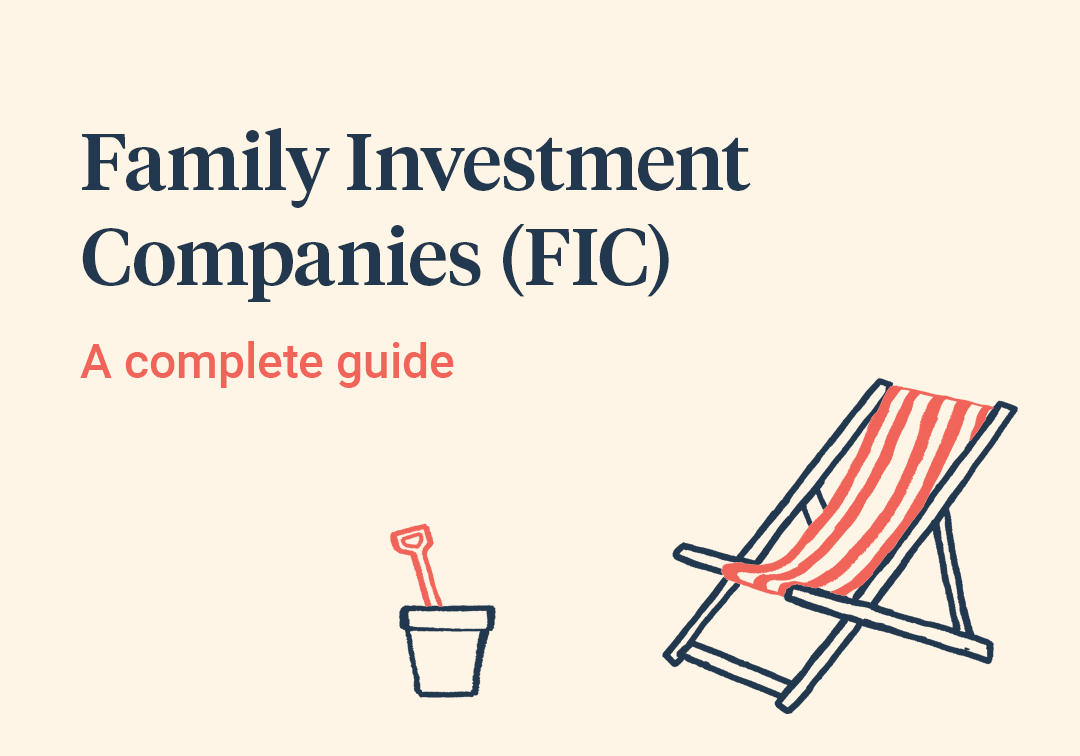There was a noticeable buzz in the office as the much-anticipated Labour Budget was announced. Described by The Chancellor, Rachel Reeves, as a budget to “restore stability”, many of the changes aimed to balance the UK’s current high debt burden whilst prioritising investment.[1] Only time will tell whether Reeves can achieve this.
Whilst budget announcements tend to be a highlight of my year, I recognise it isn’t everyone’s. As much as I’d like to explore everything that was announced, as this is the type of thing I love doing, some policies will have a greater impact than others. As such, I’m going to focus on the changes that will likely have the most significant effects and how these may alter your approach to planning in the future.
Two key topics stand out: changes to inheritance tax (IHT) and Capital Gains Tax (CGT). Reeves has acknowledged that tax rises were necessary, though she assured us that no further hikes should be expected. [2] Whilst changes to tax aren’t generally that liked, the updates introduced appear to strike a fairly balanced approach. So, without further ado, let’s dive in…
Inheritance Tax: taxing times ahead
When it was announced that, from April 2027, most unused pensions will form part of your estate for inheritance tax purposes, there was quite a reaction in the office. As a self-proclaimed ‘pensions geek’, this was the change that caught my attention.
How much do you need to retire and more…

How much income do you need to be comfortable, how much do you need invested and how to pay less tax...
Initially a puzzling announcement, Reeves didn’t quite explain how this would be implemented and who would be impacted during her speech. However, it wasn’t long until we gained clarity on the extent of the change after the Government published a consultation paper following the budget.[3]
So, what has changed and how might it affect you? Overall, these changes should not fill you with dread. One reason being that you have a while before these changes are enacted, giving you plenty of opportunity to update your financial plan accordingly. The second reason being that this is currently in a consultation period, meaning things could change. Bearing this in mind, as mentioned, most unused pension pots and death benefits will now be included in the assessment for inheritance tax. However, as always, it’s more nuanced than that. Here’s a breakdown of how some of the changes will be applied:
- Spousal exemption will apply meaning this will not impact pensions passed between married couples or civil partners.
- In most circumstances, if an individual dies before 75: their pension will form part of their estate for IHT purposes. The beneficiary will not pay income tax at their marginal rate when accessing this pension.
- In most circumstances, if an individual dies after 75: their pension will form part of their estate for the IHT purposes. The beneficiary will also pay income tax at their marginal rate when accessing this pension. This, in effect, represents a form of double taxation.
From my perspective, the double taxation element is a key area you may want to review as part of your financial plan. With life expectancy being roughly 79 years for men and 83 years for women on average in the UK, it’s more than likely this will have a significant bearing on a number of individuals.[4] A perfect illustration of this double taxation element can be found in case study 5 from the Government consultation paper (as shown below).
Case study 5
“This case study sets out how the changes will impact a member who dies above age 75, when unused pensions and pensions benefits are also subject to Income Tax.
5.1. During his working life. Amir made contributions to a DC scheme. At the date of his death, aged 80, the pension fund is valued at £400,000. The remainder of his estate is valued at £1,000,000. Following his death Amir’s DC pension fund will be paid to beneficiaries chosen by the pension scheme trustees, although he has nominated his grandchild. The pension scheme rules allow the fund to be taken by the beneficiaries either as a lump sum death benefit payment, or as any type of pension income. They choose to follow Amir’s nomination and pay to a beneficiary who is not a surviving spouse or civil partner.”[2]
Case study 5 showcases Amir, who has a pension of £400,000 and an estate valued at £1,000,000. Under the current rules, if Amir passes away over the age of 75, his pension does not form part of his estate for IHT purposes. This means his beneficiaries (like his grandson) would typically only face income tax at their marginal rate when they withdraw the pension. However, with the proposed changes, the entire value of Amir’s pension will now also be factored into his estate for IHT calculations.
To put this into perspective, Amir’s estate would increase from £1,000,000 to £1,400,000 with his pension included, raising his IHT liability from £270,000 to £430,000 (£1,400,000 – £325,000 nil rate band = £1,075,000. Inheritance Tax charged at 40% = £430,000). Amir’s pension is c. 28.57% of his estate. Consequently, once IHT is deducted from the pension (£430,000 * c. 28.57% = £122,857) , the grandson would receive £277,143. Whether he opts to receive a lump sum or ongoing income, he’ll now need to account for income tax based on his marginal rate. If Amir’s grandson was a higher rate taxpayer, this could see the £277,143 taxed by a further 40% reducing it again to £166,286. In this instance, that’s an effective tax rate of 58%.
I recognise there are a lot of numbers to process here but the crucial takeaway is that, currently, beneficiaries who aren’t spouses or civil partners will face both IHT and income tax in April 2027 on inherited pensions. Importantly, the consultation case studies indicate the pension scheme administrator must pay HMRC directly from the proportionate percentage of the IHT liability. This means that the executors lack the flexibility to choose which assets to use to settle the tax bill. These are the changes outlined for now. I hope, though, the issue of double taxation is reevaluated during the consultation period prior to 2027.
On another note, the residence nil rate band has been left unchanged.[5] With pensions now included in your overall estate, this could mean you are more likely to reach the £2-2.75 million bracket where the residence nil rate band begins to taper. If you know you’re currently close to the threshold, or you’re not sure, it’s worth checking in with your financial adviser on how to manage this effectively.
Although I’ve just shared some, potentially, bad news, I feel the need to reiterate that these changes shouldn’t leave you feeling alarmed. They represent a return to the original purpose of pensions before the updates made in 2015.[6] Pensions were never meant to be left untouched for future generations; they were designed to fund your retirement. 2015 was some time ago now though. The change in rules undoubtedly lead to more (albeit correct) simple approach to planning– take income from the pension last if IHT is important to you. This mindset will no longer apply under the new rules in 2027.[7] Effective IHT planning will require a more careful and proactive approach.
So, what might be your alternative planning options going forward?
Do you want to improve your tax position?
The more tax you pay, the harder your investments must work to grow your wealth. Our advisers can provide practical advice to help reduce your tax bill. Get in touch to discuss how we can help you.

Lifetime gifting
It may now make more sense to utilise your pension in different ways to minimise IHT for your beneficiaries. You could rethink your gifting strategy. Where appropriate, this could involve withdrawing your tax-free lump sum allowance during your lifetime and putting those funds to good use. As well as funding personal expenses, this could be used to provide gifts to family members. By doing so, you can effectively reduce the value of your pension subject to IHT. In addition, if you survive for seven years after making these gifts, they won’t count toward your estate for IHT calculations. There are numerous other ways of gifting where you don’t need to survive for 7 years which you can take advantage of. Some of these include the £3,000 allowance for children, £5,000 gifting allowance for your child’s wedding, and regular gifts out of excess income. However, when it comes to gifting from excess income, it’s important to keep good records if this is a strategy you choose to undertake. Of course, the affordability of this approach will need to be regularly reviewed. It also may not be suitable for everyone’s situation, so it’s important to consult your financial adviser before making any such decisions. Generally though, simply giving your money away tends to come with the lowest level of complexity, tax burden and cost.
Placing money into Trust
Helpfully, no changes were made to the nil rate band which remains at £325,000 alongside the residence nil rate band at £175,000. Estates above these thresholds are subject to a 40% tax. [8] Using a trust can help reduce your IHT liability by removing assets from your estate after 7 years of it being put into the trust, enabling you to regain your nil rate band at this point. It also offers greater control over how and when your beneficiaries access their inheritance. However, trusts come with drawbacks. This includes: a 20% entry charge on amounts above the nil rate band, higher tax rates on income and CGT within the trust, and potentially costly administrative burdens. This makes it important to carefully weigh the benefits of control against the added complexity and costs. An adviser can help determine whether a trust is right for your financial plan.
Protection
Whole of life (WOL) insurance could be another effective strategy, particularly for high net worth individuals.[9] Put simply, WOL insurance is a type of permanent life insurance that can mitigate your estimated IHT liability, as long as the premiums are paid.
One of its main advantages is the guaranteed payout, which ensures your beneficiaries have the liquidity to settle the IHT bill. By placing the policy in a trust, the death benefit can be excluded from your estate for IHT purposes, further minimising tax exposure. Typically, the proceeds from a WOL insurance policy are paid out tax-free and without need for probate. Policies like these can be particularly beneficial if you have a large property portfolio where regular gifting can be more challenging, or if you have a large estate with substantial liability over the nil rate band. As always, there are potential drawbacks: it can be incredibly costly. It can also be challenging to adjust the level of cover once it is established, and you need to be certain that the payments will always be met. It’s not for everyone.
AIM shares
Alternative Investment Market (AIM) shares are stocks from smaller, growing companies listed on a stock exchange in the UK for early-stage businesses. AIM shares are designed to help these types of firms raise capital whilst benefiting from more flexible regulatory requirements compared to larger markets.[10] Previously, a key advantage of investing in AIM shares was that many qualify for Business Property Relief (BPR), which can exempt them from IHT if held for at least two years.
However, investing in AIM shares requires careful consideration. They are known to be highly volatile, and the risk of losses surpassing any potential IHT savings is significant, especially in light of recent policy changes. Formerly, AIM shares offered a 40% tax benefit. In the recent budget, these benefits were cut to an effective rate of 20%. Given their high risk nature, the Budget additional consideration should be given when deciding to allocate cash to an AIM investment.[11] Losing more than 20% is a very realistic prospect. They are still viable in some circumstances but tread with care.
Accelerated Inheritance Tax Solutions (AITS)
These offer a potentially interesting approach to mitigating IHT. AITS is an investment solution that combines BPR with life insurance to help reduce IHT. Unlike AIM shares, these products invest in businesses that qualify for a 100% rate of IHT relief for up to £1 million. The attached insurance product also covers any IHT liability they may attract in the first two years of the investment. This means the investor must hold onto these investments for a minimum of 2 years before they fall outside the estate for IHT purposes. During this period, the insurance product is designed to cover the IHT liability, provided that the investor meets the eligibility requirements for the insurance. The underlying businesses can come with significant liquidity risks though. They aren’t sold on an exchange. You also rely heavily on the competency of the provider in their portfolio construction and management. As such, it’s unlikely they’d be appropriate for a significant percentage of your assets but, in the right circumstances, they can be useful for later life planning.
All these options can feel overwhelming, but it’s important to remember none of the changes to IHT have happened yet. As aforementioned, some aspects of what has been outlined may alter before April 2027. It could be shortsighted to make sweeping changes prior to this. Regardless, any change will likely be to the detail. The headline that pensions will form part of your estate is probably here to stay. If it does, reviewing your financial strategy and IHT position with your adviser annually will become even more important.
Capital Gains Tax: no surprises here
Apart from the changes to pensions, the other aspect dominating conversation was the announcement that Capital Gains Tax (CGT) would increase. Reeves confirmed the main rate of CGT will increase immediately from 10 to 18% and 20 to 24% for lower rate and higher rate taxpayers respectively. There was no update on the annual tax exemption altering, which remains at £3,000. Whilst I might give myself a small pat on the back for correctly predicting this change (we’ll forget about my other article considering the possibility of a flat 30% tax relief on pension contributions), it’s safe to say this wasn’t that surprising. What was surprising was the immediacy. Most people assumed it was likely CGT would increase, but thought there would be more time before it took effect. This would have enabled people to crystalise their gains and increased Government revenues generated by this activity. Now, it’s created two different camps: either you see this as an opportunity to still crystalise gains whilst CGT remains at historical lows, or you might believe there’s opportunity for CGT to be reduced again. [12]
Whilst nothing can be said for certain, I’d warn against putting all your faith in CGT going down. Given that Labour has just increased it, it seems unlikely they would consider a reduction. In addition, the previous Government commissioned a review of CGT which recommended an increase and a reduction to the annual tax-free allowance. The latter of which they implemented. CGT objectively remains an extremely low rate, having been set at 30% or above for almost 30 years since 1980. Let’s not forget that there were whispers Reeves might raise CGT to 40% for higher rate taxpayers, aligning it with the higher rate income tax band.[13] It may still be disappointing that you will have to pay 4% more in CGT than under the previous rules, but it could have been a lot worse. As with any tax, there’s a possibility for future increases. This could be particularly relevant for those with second properties. I was especially surprised the GGT rate on these didn’t increase in the budget given Labour’s focus on Landlords. Given this context, if you have capital gains, do consider reviewing these with your adviser. We may not get off so lightly next time.
The changes in the budget are noteworthy but there’s no need to rush into any major decisions. With the pension changes not taking effect until 2027, you have time to think about how these shifts will impact your plans. In addition, details may change as part of the consultation process. As always, it remains important to review your financial strategy with your adviser regularly. Annual reviews may help you stay ahead of any potential tax implications and ensure your financial plan remains aligned with your goals. There’s no need to act hastily, but now is a good time to take stock and prepare for what’s ahead.
Do you want to improve your tax position?
The more tax you pay, the harder your investments must work to grow your wealth. Our advisers can provide practical advice to help reduce your tax bill. Get in touch to discuss how we can help you.

Article sources
Editorial policy
All authors have considerable industry expertise and specific knowledge on any given topic. All pieces are reviewed by an additional qualified financial specialist to ensure objectivity and accuracy to the best of our ability. All reviewer’s qualifications are from leading industry bodies. Where possible we use primary sources to support our work. These can include white papers, government sources and data, original reports and interviews or articles from other industry experts. We also reference research from other reputable financial planning and investment management firms where appropriate.
Saltus Financial Planning Ltd is authorised and regulated by the Financial Conduct Authority. Information is correct to the best of our understanding as at the date of publication. Nothing within this content is intended as, or can be relied upon, as financial advice. Capital is at risk. You may get back less than you invested. Tax rules may change and the value of tax reliefs depends on your individual circumstances.
About Saltus?
Find out more about our award-winning wealth management services…
Winner
Best Wealth Manager
Winner
Investment Performance: Cautious Portfolios
Winner
Top 100 Fund Selectors 2024
Winner
Best Places to Work 2024
£8bn+
assets under advice
20
years working with clients
350+
employees
97%
client retention rate



